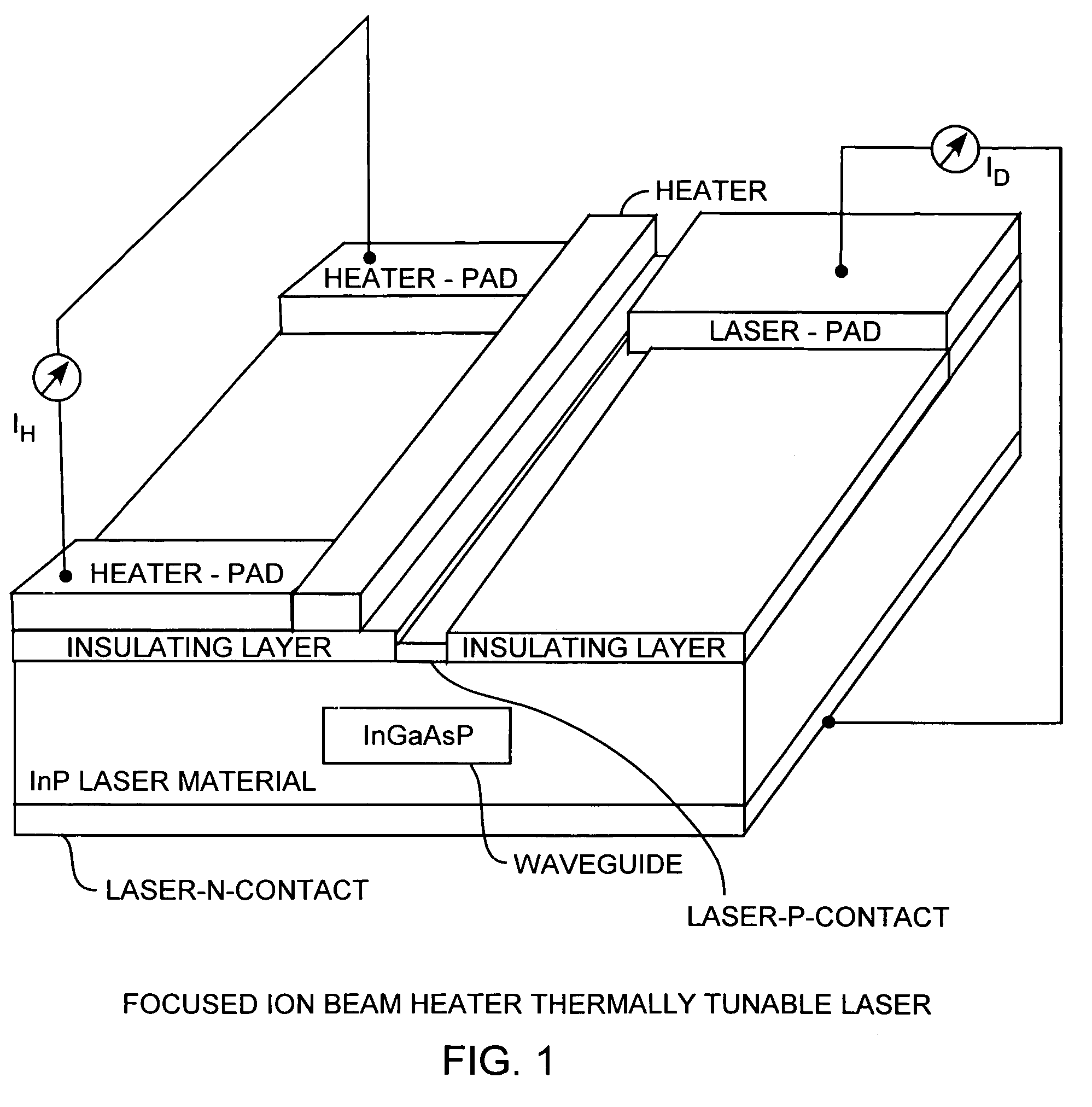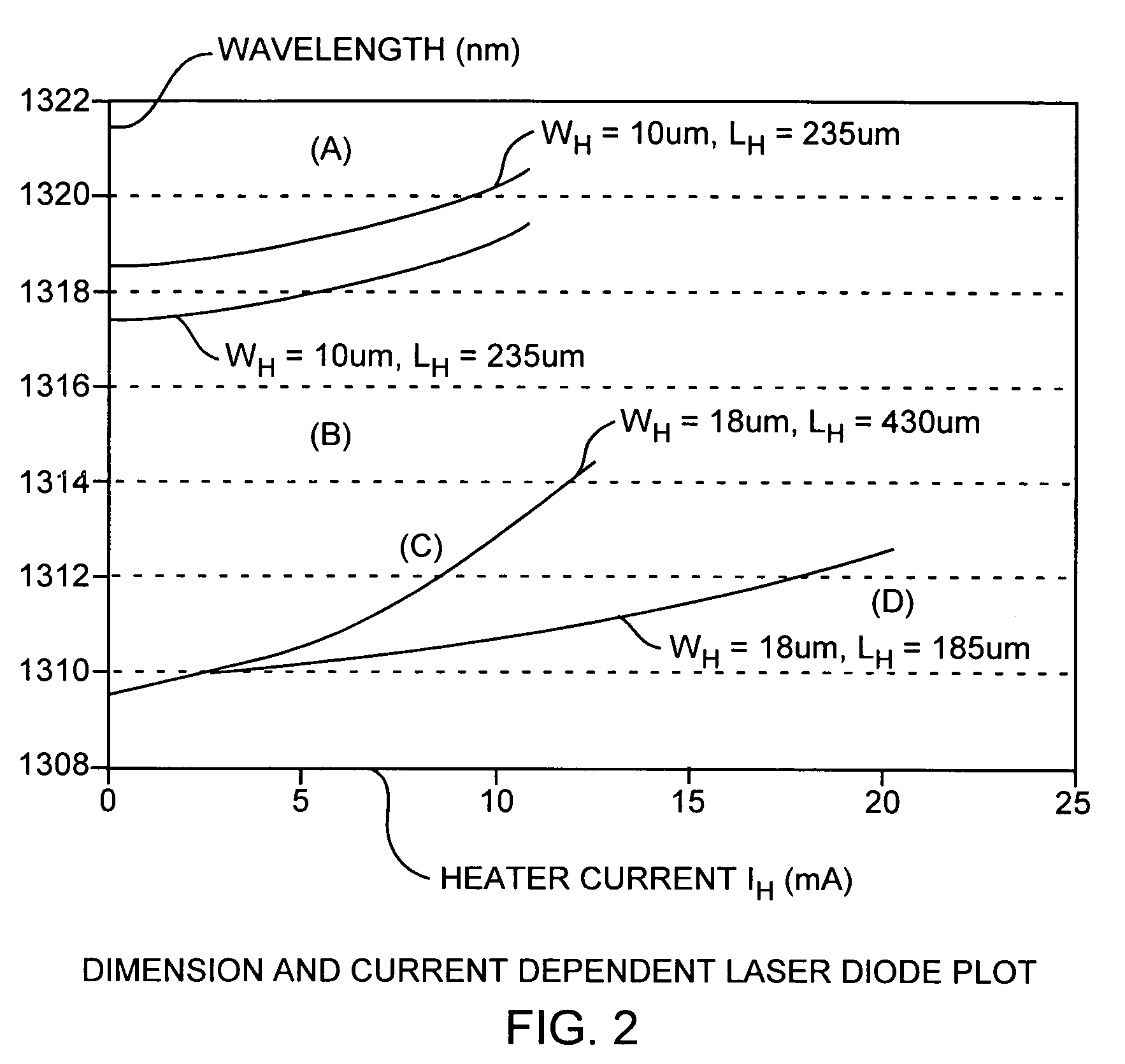Focused ion beam heater thermally tunable laser
a laser and laser technology, applied in the field of tunable lasers, can solve the problems of high power requirement of first approach, high cost, and slow tuning speed
- Summary
- Abstract
- Description
- Claims
- Application Information
AI Technical Summary
Benefits of technology
Problems solved by technology
Method used
Image
Examples
Embodiment Construction
[0015] An embodiment of the invention is described with reference to the figures using reference designations as shown in the figures. Referring to FIG. 1, a focused ion beam heater thermally tunable laser is preferably made using metal organic chemical vapor deposition (MOCVD) to grow laser epitaxial structures and using semiconductor fabrication processes. An active region or waveguide is formed in the laser structure for generating photons and guiding light. An insulating layer, in this case silicon dioxide film, is deposited on the top surface of lasers. An opening or channel is introduced in the insulating layer to form P-ohmic contact, which is subsequently connected to a laser pad. A thin film heater and two heater pads are deposited on the insulating layer. Two heater pads are used for flowing currents through the heater using a heater current (IH). A laser diode current (ID) flows between the laser pad and the laser N-ohmic contact. The ID current is used to conduct current...
PUM
 Login to View More
Login to View More Abstract
Description
Claims
Application Information
 Login to View More
Login to View More - R&D
- Intellectual Property
- Life Sciences
- Materials
- Tech Scout
- Unparalleled Data Quality
- Higher Quality Content
- 60% Fewer Hallucinations
Browse by: Latest US Patents, China's latest patents, Technical Efficacy Thesaurus, Application Domain, Technology Topic, Popular Technical Reports.
© 2025 PatSnap. All rights reserved.Legal|Privacy policy|Modern Slavery Act Transparency Statement|Sitemap|About US| Contact US: help@patsnap.com



